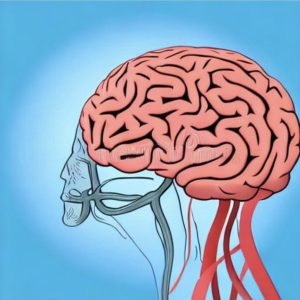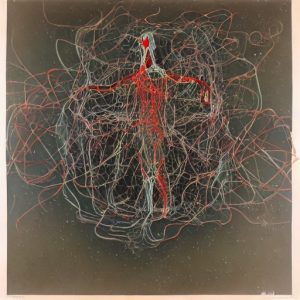 The human brain and nervous system are complex structures that are responsible for controlling and coordinating various bodily functions. The brain is the center of the nervous system, and it plays a vital role in controlling the activities of the body. The nervous system is divided into two main parts: the central nervous system (CNS) and the peripheral nervous system (PNS). In this article, we will take a closer look at the structure and functions of the brain and nervous system.
The human brain and nervous system are complex structures that are responsible for controlling and coordinating various bodily functions. The brain is the center of the nervous system, and it plays a vital role in controlling the activities of the body. The nervous system is divided into two main parts: the central nervous system (CNS) and the peripheral nervous system (PNS). In this article, we will take a closer look at the structure and functions of the brain and nervous system.
The Brain The human brain is a soft, spongy mass of nerve tissue that is protected by the skull. It is made up of approximately 100 billion neurons, which are the basic building blocks of the nervous system. The brain can be divided into three main parts: the cerebrum, the cerebellum, and the brainstem.
The cerebrum is the largest part of the brain, and it is responsible for conscious thought, memory, language, and other cognitive functions. The cerebrum is divided into two hemispheres, the left and the right, which are connected by a bundle of nerve fibers called the corpus callosum. Each hemisphere is further divided into four lobes: the frontal lobe, the parietal lobe, the temporal lobe, and the occipital lobe.
The frontal lobe is located at the front of the brain, and it is responsible for decision-making, problem-solving, and planning. The parietal lobe is located at the top and back of the brain, and it is responsible for processing sensory information such as touch, taste, and temperature. The temporal lobe is located on the sides of the brain, and it is responsible for processing auditory information and storing long-term memories. The occipital lobe is located at the back of the brain, and it is responsible for processing visual information.
The cerebellum is located at the back of the brain, and it is responsible for coordinating movement, balance, and posture. It receives information from the sensory systems, the spinal cord, and other parts of the brain, and it uses this information to fine-tune movement and maintain balance.
The brainstem is the lowest part of the brain, and it connects the brain to the spinal cord. It is responsible for controlling vital functions such as breathing, heart rate, and blood pressure.
The Nervous System The nervous system is a complex network of nerves and cells that carry messages throughout the body. It can be divided into two main parts: the central nervous system (CNS) and the peripheral nervous system (PNS).
The CNS consists of the brain and spinal cord, and it is responsible for processing and coordinating information from the PNS. The spinal cord is a long, thin, tubular structure that runs from the brain down the back. It is responsible for relaying information between the brain and the rest of the body.
The PNS consists of the nerves that connect the CNS to the rest of the body. It can be further divided into the somatic nervous system and the autonomic nervous system.
The somatic nervous system controls voluntary movements and transmits sensory information to the CNS. It includes the nerves that control the muscles, skin, and joints.
The autonomic nervous system controls involuntary functions such as heart rate, breathing, and digestion. It is further divided into the sympathetic and parasympathetic nervous systems. The sympathetic nervous system is responsible for the “fight or flight” response, which prepares the body to respond to stress or danger. The parasympathetic nervous system is responsible for the “rest and digest” response, which promotes relaxation and digestion.
Neurons Neurons are the basic building blocks of the nervous system. They are specialized cells that are responsible for transmitting information throughout the body. There are three main types of neurons: sensory neurons, motor neurons, and interneurons.
Sensory neurons are responsible for transmitting information from the sensory organs, such as the eyes, ears, nose, and skin, to the CNS. Motor neurons are responsible for transmitting information from the CNS to the muscles and glands, which enables movement and other bodily functions. Interneurons are responsible for transmitting information between neurons in the CNS, which enables complex cognitive processes such as perception, memory, and decision-making.
Neurons are made up of three parts: the cell body, the dendrites, and the axon. The cell body contains the nucleus and other organelles, which enable the neuron to carry out its functions. The dendrites are branched extensions that receive signals from other neurons and transmit them to the cell body. The axon is a long, thin, tubular extension that transmits signals from the cell body to other neurons, muscles, or glands.
Neurons communicate with each other through synapses, which are specialized structures that allow signals to be transmitted from one neuron to another. When an electrical signal, or action potential, reaches the end of an axon, it triggers the release of neurotransmitters, which are chemicals that transmit the signal across the synapse to the dendrites of the next neuron. The neurotransmitters bind to receptors on the dendrites, which generates a new electrical signal and starts the process over again.
Neuroplasticity One of the most fascinating aspects of the brain and nervous system is their ability to change and adapt over time. This phenomenon is known as neuroplasticity, and it enables the brain to reorganize and form new connections in response to changes in the environment or to injury.
Neuroplasticity occurs through a process called synaptic plasticity, which involves changes in the strength or number of synapses between neurons. When a neuron is repeatedly activated, the synapses that transmit the signal become stronger, which enhances the neuron’s ability to transmit the signal in the future. Conversely, when a neuron is not activated for a prolonged period of time, the synapses that transmit the signal become weaker, which reduces the neuron’s ability to transmit the signal in the future.
Neuroplasticity is particularly important in learning and memory, as it enables the brain to adapt to new experiences and retain information over time. It is also important in recovery from brain injuries, as the brain can form new connections to compensate for damaged areas.
In conclusion, the human brain and nervous system are complex and fascinating structures that are responsible for controlling and coordinating various bodily functions. The brain is the center of the nervous system, and it can be divided into three main parts: the cerebrum, the cerebellum, and the brainstem. The nervous system is divided into two main parts: the CNS and the PNS, which work together to transmit information throughout the body. Neurons are the basic building blocks of the nervous system, and they communicate with each other through synapses. Neuroplasticity enables the brain to change and adapt over time, which is important in learning, memory, and recovery from brain injuries.

 The human brain and nervous system are complex structures that are responsible for controlling and coordinating various bodily functions. The brain is the center of the nervous system, and it plays a vital role in controlling the activities of the body. The nervous system is divided into two main parts: the central nervous system (CNS) and the peripheral nervous system (PNS). In this article, we will take a closer look at the structure and functions of the brain and nervous system.
The human brain and nervous system are complex structures that are responsible for controlling and coordinating various bodily functions. The brain is the center of the nervous system, and it plays a vital role in controlling the activities of the body. The nervous system is divided into two main parts: the central nervous system (CNS) and the peripheral nervous system (PNS). In this article, we will take a closer look at the structure and functions of the brain and nervous system. Here are some strategies for putting nervous people at ease in potentially awkward social situations:
Here are some strategies for putting nervous people at ease in potentially awkward social situations:




